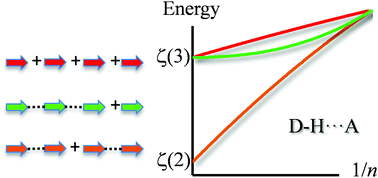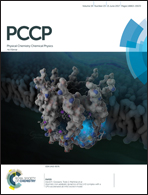Origin of cooperativity in hydrogen bonding
Abstract
The origin of non-additivity in hydrogen bonds (H-bonds), usually termed as H-bond cooperativity, is investigated in H-bonded linear chains. It is shown that H-bond cooperativity originates solely from classical electrostatics. The latter is corroborated by comparing the H-bond cooperativity in infinitely-long H-bonded hydrogen cyanide, 4-pyridone and formamide chains, assessed using density functional theory (DFT), against the strengthening of the dipole–dipole interaction upon the formation of an infinite chain of effective point-dipoles. It is found that the magnitude of these effective point-dipoles is a consequence of mutual polarization and additional effects beyond a polarizable point-dipole model. Nevertheless, the effective point-dipoles are fully determined once a single H-bond is formed, indicating that quantum effects involved in H-bonding are circumscribed to nearest-neighbor interactions only; i.e. in a linear chain of H-bonds, quantum effects do not contribute to the H-bond non-additivity. This finding is verified by estimating cooperativity along the dissociation path of H-bonds in the infinite chains, using two empirical parameters that account for polarizability, together with DFT association energies and molecular dipoles of solely monomers and dimers.



 Please wait while we load your content...
Please wait while we load your content...